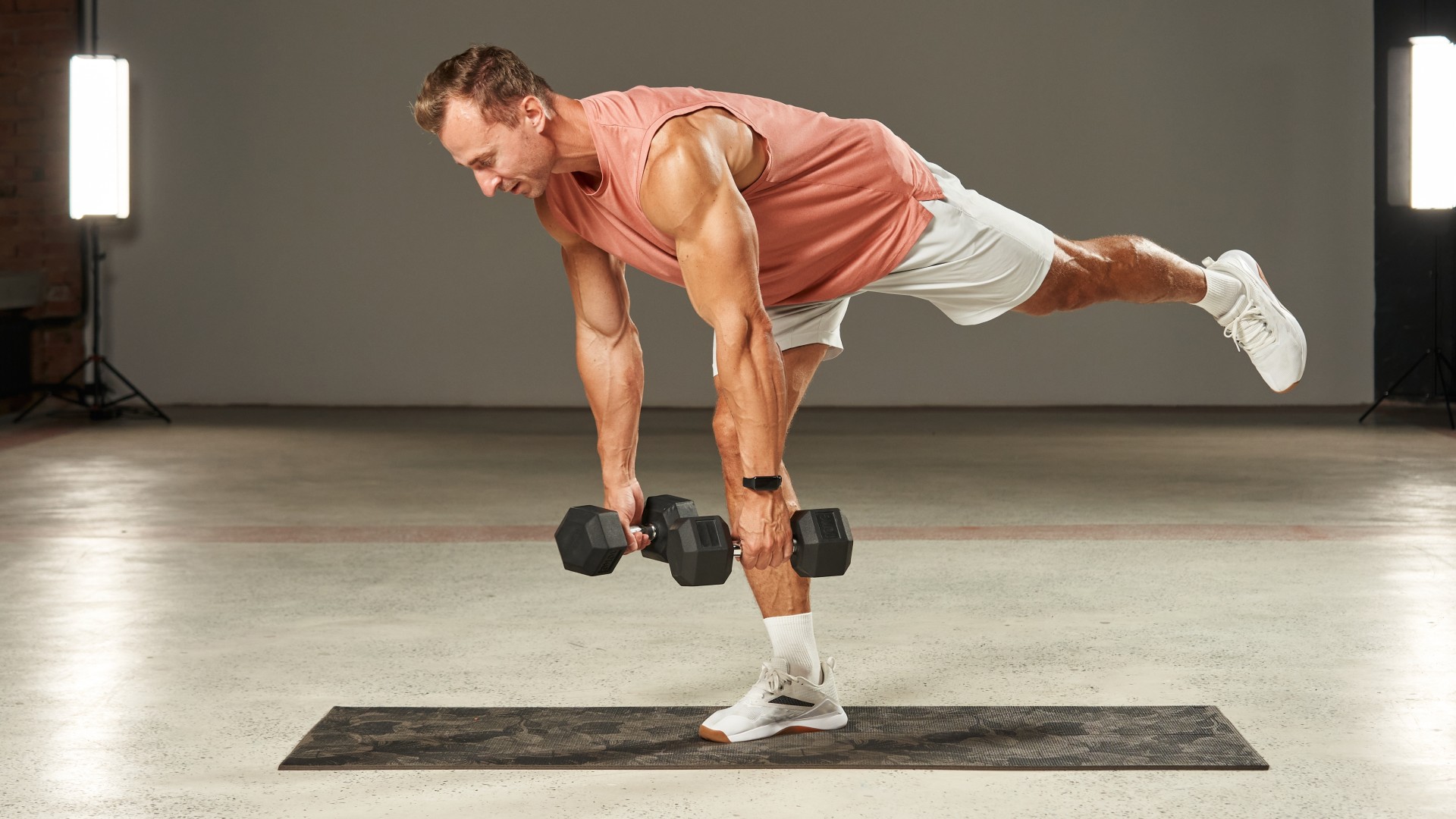
The best dumbbell leg exercises for beginners build lower body muscle and stronger quads, hips, glutes, hamstrings and calves without barbells.
Barbells have long been the gold standard for packing heavy weights for leg exercises, but the best adjustable dumbbells or fixed bells are a great alternative to using one and are more accessible for beginners or those enjoying home workouts.
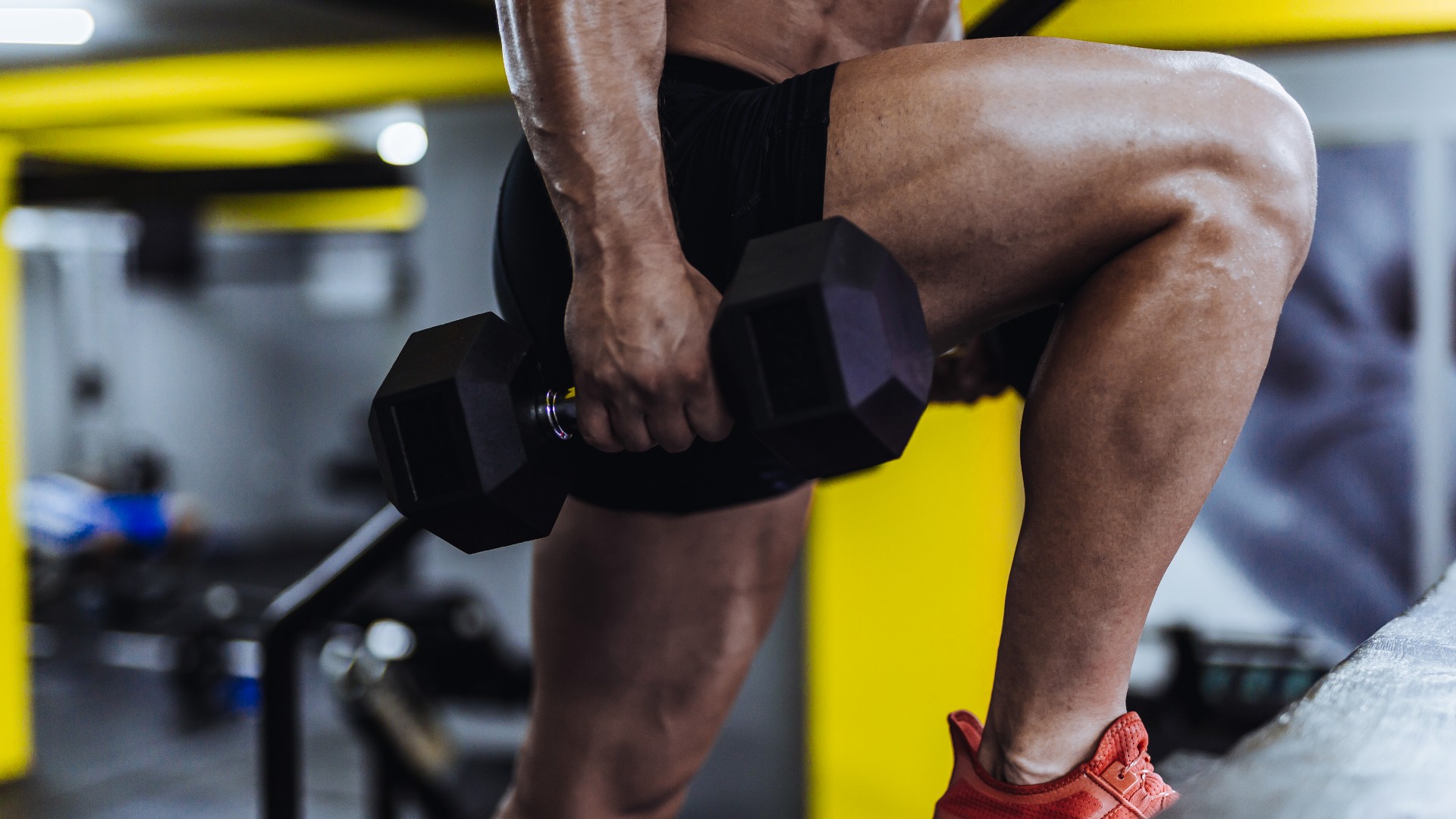
Your glutes and quads are some of the biggest and most powerful in the human body; we recommend scaling up with medium to heavy weights if you plan to try the dumbbell exercises below to ensure you’re properly loading your legs and challenging core stability.
If you’re currently working with an injury, pre or post-natal, or are new to exercise, we always recommend checking in with a qualified physician before starting a new regime.
5 dumbbell leg exercises for beginners
1. Dumbbell split squats
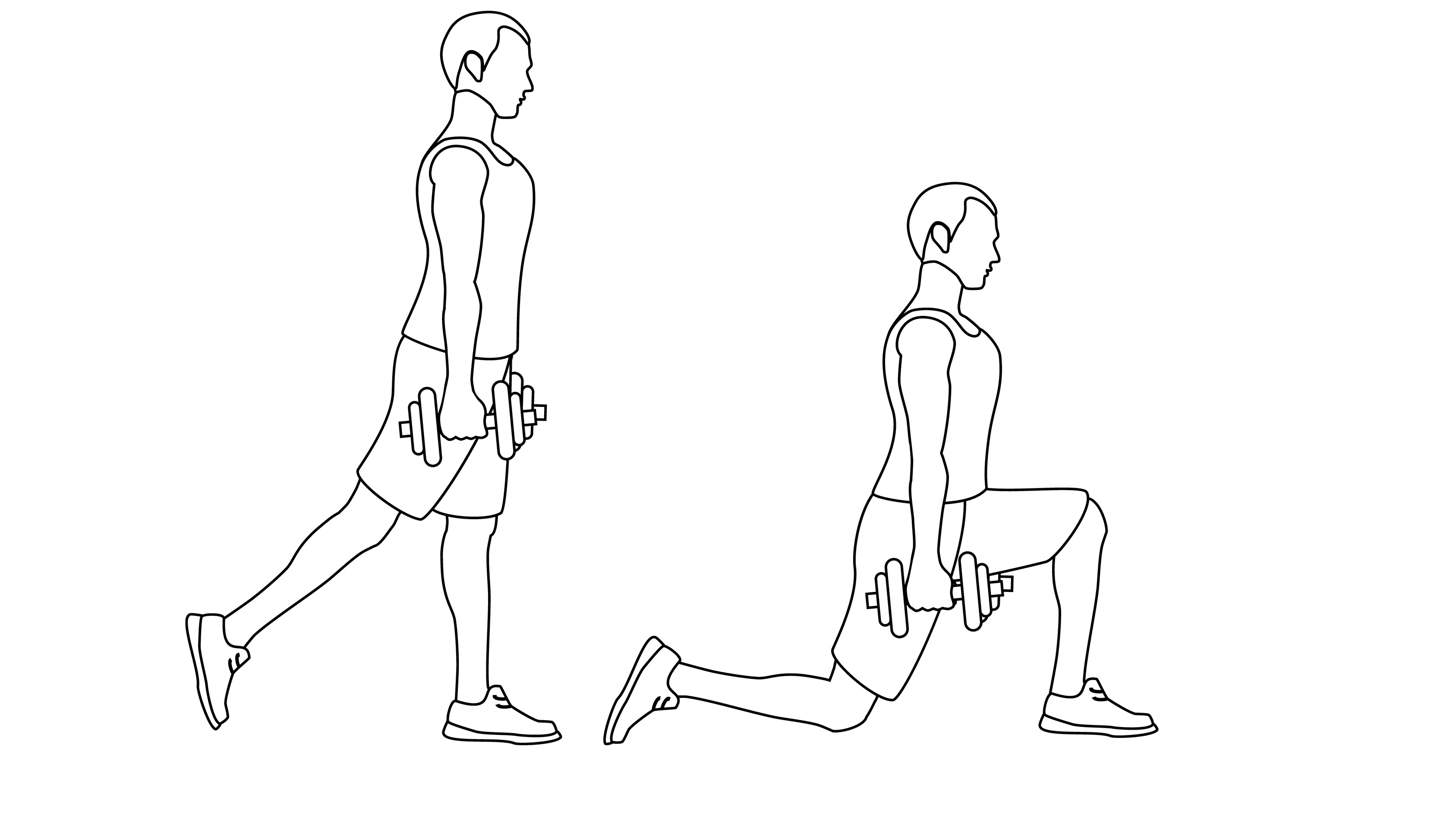
Unlike Bulgarian split squats, which elevate your back leg, this version only uses the ground and is a great entry-level split squat exercise to try. Split squats work both legs together but tap into unilateral training by working the right and left sides of your body slightly differently.
How:
- Hold a dumbbell in each hand and stand with your feet hip-width apart.
- Take a big step back with your right leg, resting on the ball of your right foot.
- Brace your core and stand tall to lengthen your spine.
- Slowly bend your knees and lower your back knee toward the floor, pressing through your front foot with the heel down.
- Pause at the bottom, then drive up through your front foot to stand and straighten your legs.
- Repeat for reps, then step forward into your starting position and change legs.
You can slightly lean forward during this exercise to help engage your glutes, but avoid an excessive lean or hunching into your back.
2. Dumbbell front rack squats
Supporting a dumbbell on each shoulder challenges core strength and stability and requires both sides of the body to work in unison. You’ll also work on shoulder mobility as you slightly elevate your elbows to shelve the dumbbells as you squat. Start by racking light, but as you get stronger, the resting position on your shoulders should allow you to hit the heavy dumbbells.
How:
- Stand with feet hip-width or shoulder-width distance apart and pick up a dumbbell in each hand.
- Rack the dumbbells to your shoulders — the front rack position — keeping your wrists straight.
- Slightly lift your elbows and brace your stomach.
- Your spine should be neutral and back straight.
- Perform a squat, sitting your hips back and down until your thighs are parallel to the floor.
- Glue your elbows to your sides throughout.
- Pause, then drive through your feet to stand.
- Give your glutes a gentle squeeze as you extend your hips.
3. Dumbbell frog squats "froggies"
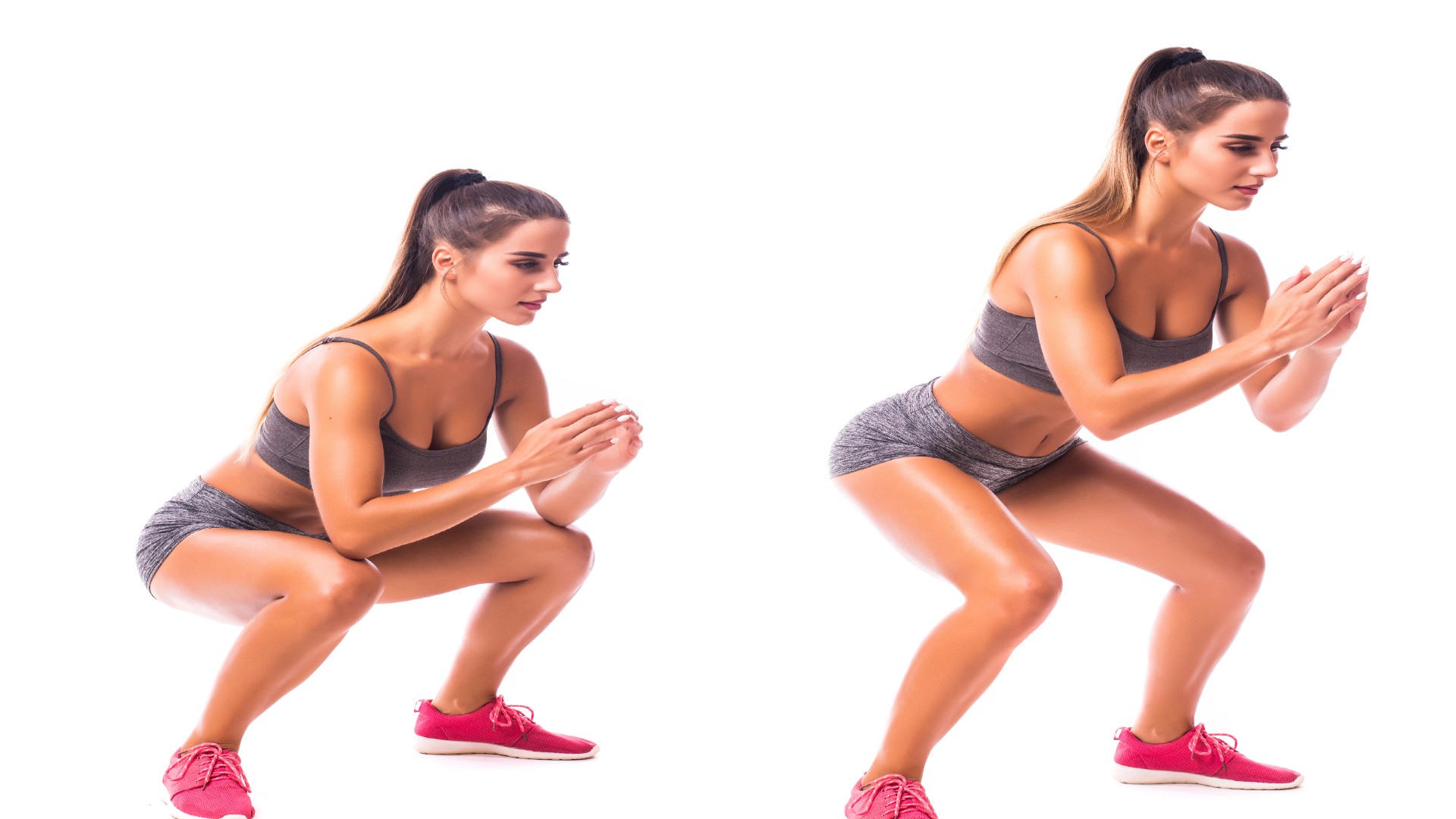
The frog squat torches the quads and hamstrings using a forward and backward rocking motion — but it’s not quite a squat. You’ll sit low into the squat position, then practice lifting and lowering your bum while keeping your knees bent. It builds fire in the lower body and tests leg strength.
How:
- Sit low into a squat position with your feet slightly wider than shoulder-width apart and toes pointed outward at 45 degrees.
- Ensure your back is straight without any hunching, and lift your chest, sinking your bum toward your heels.
- Keep pressing your heels into the ground and push your knees outward to track in line with your toes.
- Hold a dumbbell across your chest, holding each end. Keep the weight close to avoid hurting your lower back.
- Lift your bum so that your chest is almost parallel to the floor, then lower it again, using a see-saw motion as you move.
- Keep your knees bent without standing up each rep.
4. Dumbbell squat hold
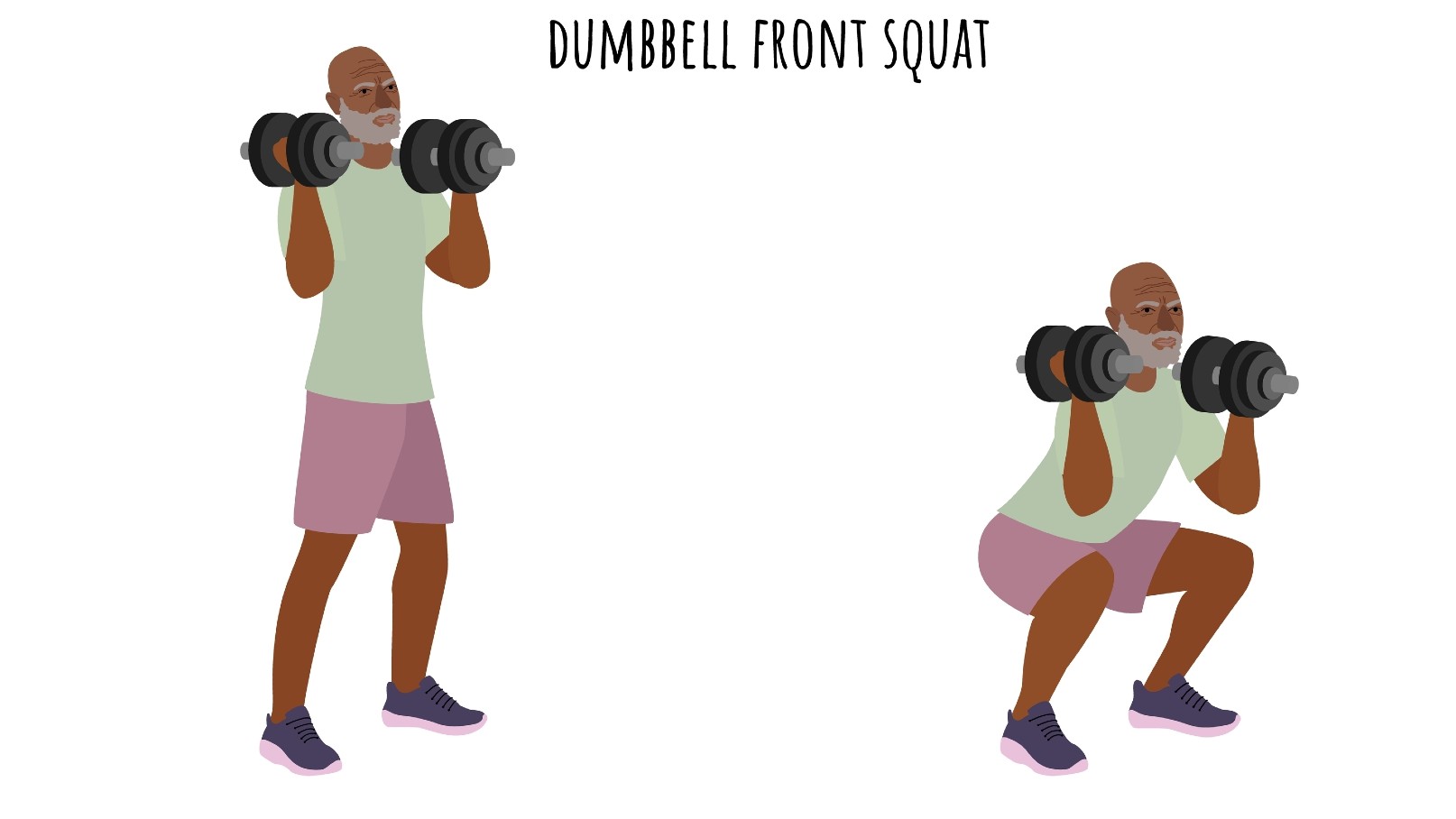
The squat hold is tough on the legs, but adding load to the squat hold sends this dumbbell exercise into beast mode. Isometric contraction means holding muscles under active tension without the muscles lengthening or shortening. Unlike squats or lunges, you’ll hold a position for a set amount of time, which can be low impact for most people while building serious fire in the targeted muscles and strengthening them.
How:
- Stand with your feet hip or shoulder-width distance apart, holding a dumbbell in both hands using a goblet hold.
- A narrow starting position hits the quads harder, but people find it difficult to find depth in the squat without the back hunching or heels lifting.
- Sit low into a squat, sending your hips back and down.
- Brace your stomach, lift your chest and pull your shoulders back and down, finding a straight back and neutral spine.
- Hold the dumbbell close to your chest.
You could increase upper body engagement by holding the dumbbell away from your chest with arms extended or using the front rack position above to heavily load the lower body.
5. Prone dumbbell hamstring curls
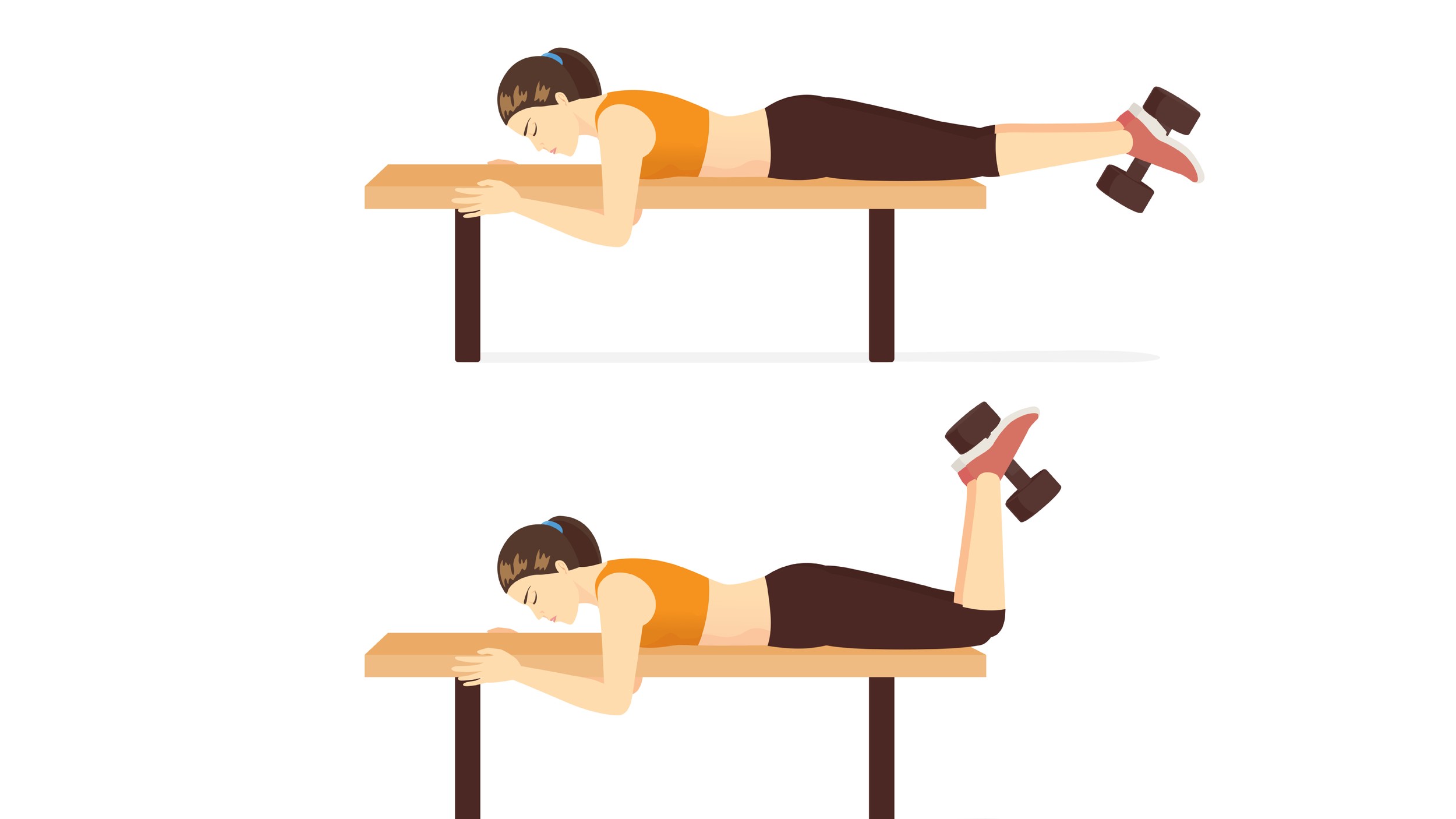
The hamstrings are active during squats and lunges, but isolating them can help you hone the muscle groups with more intensity. For this exercise, just use one dumbbell and practice slowing the exercise down and moving with control through the lifting and lowering phases to work the hamstrings harder for longer.
How:
- Start on your stomach, either lying on the floor or a bench and extend your legs.
- Grip the bench or rest on your elbows and slightly lift your chest without arching your back.
- Position the dumbbell between your feet, then press the medial sides of your feet against the dumbbell, gripping just underneath the end of the dumbbell.
- Brace your stomach, quads and glutes, then slowly curl your legs, drawing your heels toward your bum.
- Keep the knees pressed down on the bench or floor.
- Pause, then slowly lower to the starting position.
Avoid swinging the weights and the front body pressed down. If you use a bench, you may need a spotter to position the dumbbell for you. It's surprisingly brutal, so start light and build up.







